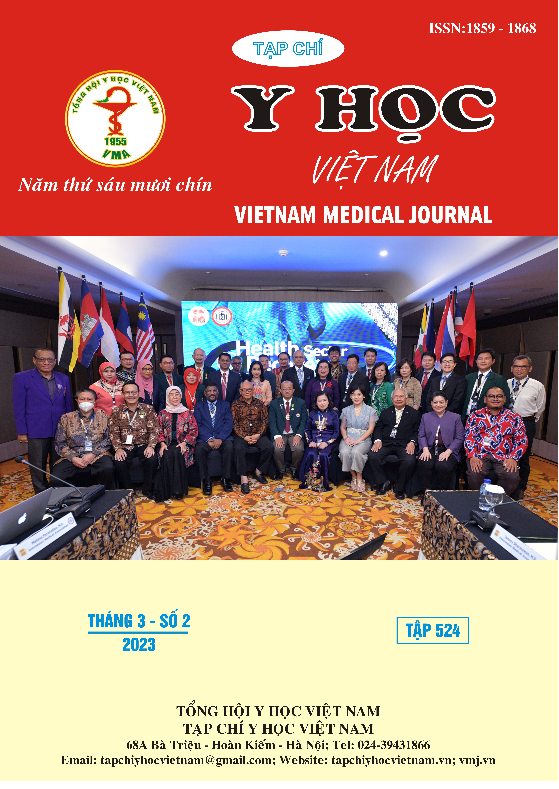ANALYSIS THE REPEAT CHANGES OF AR GENE IN PATIENTS WITH ANDROGEN INSENSITIVITY SYNDROME
Main Article Content
Abstract
Androgen insensitivity syndrome is one of the most common disorders of sexual development. The AR gene test is an accurate method of determining the cause of androgen insensitivity syndrome. Objectives: To present the clinical characteristics, chromosomal formula and sequencing AR gene of patients with antiandrogen syndrome. Methods: We used Sanger sequencing to identify AR gene mutations in 14 patient with androgen insensitivity syndrome. Results: With the application of AR gene sequencing method in androgen insensitive patients, we detected more than times CAG repeats on the AR gene in 5/14 patients with female phenotype, karyotype 46,XY, having SRY gene. , 2 cases have karryotyp 46,XX but have testicular differentiation gene ZFY, 3/14 patients have point mutation in AR gene. This result helps the family to orient the patient's sex and is the basis for prenatal diagnosis in the next birth for the patient's family.
Article Details
Keywords
Androgen Insensitivity Syndrome, AR gene, bisexual.
References
2. Nurin Aisyiyah Listyasari et al (2019). Genetic Analysis Reveals Complete Androgen Insensitivity Syndrome in Female Children Surgically Treated for Inguinal Hernia. Journal of Investigative Surgery, 23:1-7.
3. Gottlieb B, Beitel LK, Wu JH, Trifiro M (2004), The androgen receptor gene mutations database (ARDB): update. Human Mutation, 23:527-533.
4. Skjærpe PA, Lundberg Giwercman Y, Giwercman A, Svartberg J. Androgen receptor gene polymorphism and the metabolic syndrome in 60-80 years old Norwegian men. International Journal of Andrology (2010) 33:500–506.
5. Nenonen H, Björk C, Skjærpe PA, Giwercman A, Rylander L, Svartberg J, Lundberg Giwercman Y. CAG repeat number is not inversely associated with androgen receptor activity in vitro. Molecular Human Reproduction (2010) 16:153-157.
6. Grigorova M, Punab M, Kahre T, et al. The number of CAG and GGN triplet repeats in the Androgen Receptor gene exert combinatorial effect on hormonal and sperm parameters in young men. Andrology. 2017;5(3):495-504.
7. Buchanan G, Yang M, Cheong A, et al. Structural and functional consequences of glutamine tract variation in the androgen receptor. Human Molecular Genetics. 2004; 13(16):1677-1692. doi:10.1093/hmg/ddh181
8. La Spada AR, Taylor JP. Repeat expansion disease: progress and puzzles in disease pathogenesis. Nat Rev Genet. 2010;11(4):247-258.


